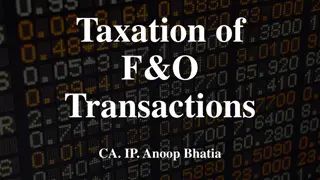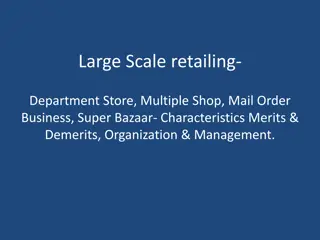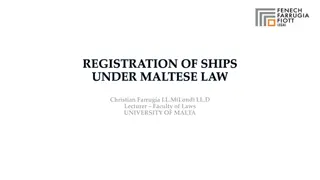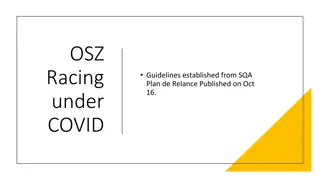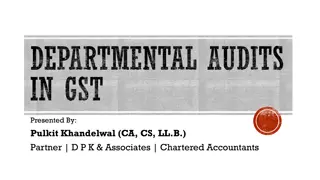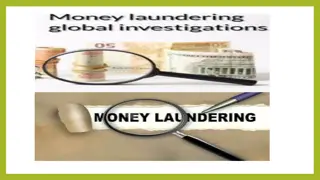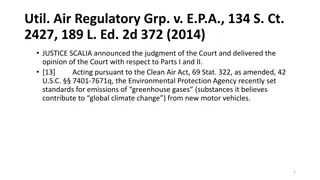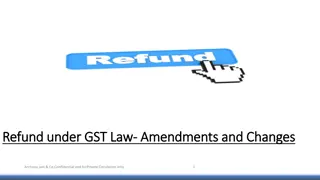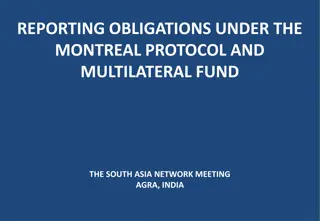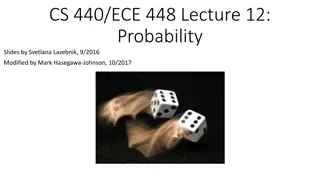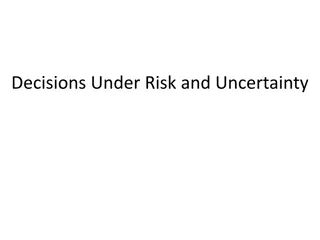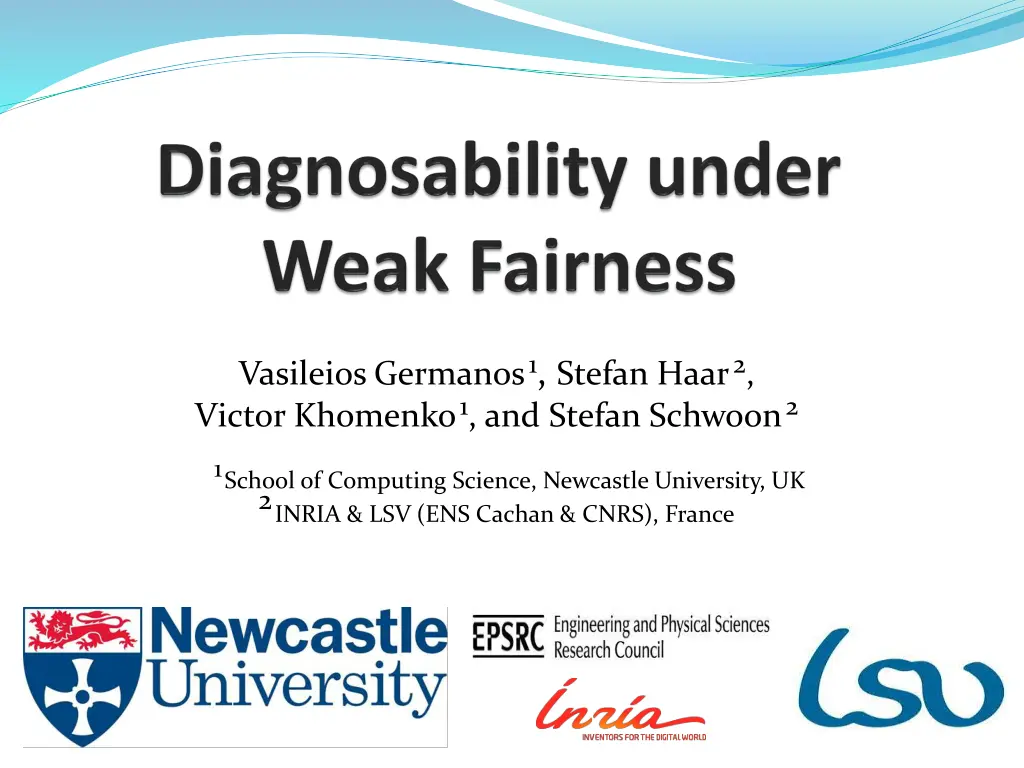
Diagnosability Techniques in System Fault Detection and Localization
Explore various aspects of diagnosability in system fault detection, including observations, system models, diagnosability verification, witnesses of diagnosability violation, and the role of Weak Fairness (WF) in fixing diagnosability issues.
Uploaded on | 0 Views
Download Presentation

Please find below an Image/Link to download the presentation.
The content on the website is provided AS IS for your information and personal use only. It may not be sold, licensed, or shared on other websites without obtaining consent from the author. If you encounter any issues during the download, it is possible that the publisher has removed the file from their server.
You are allowed to download the files provided on this website for personal or commercial use, subject to the condition that they are used lawfully. All files are the property of their respective owners.
The content on the website is provided AS IS for your information and personal use only. It may not be sold, licensed, or shared on other websites without obtaining consent from the author.
E N D
Presentation Transcript
Vasileios Germanos1, Stefan Haar2, Victor Khomenko1, and Stefan Schwoon2 1School of Computing Science, Newcastle University, UK 2INRIA & LSV (ENS Cachan & CNRS), France
Diagnosis observations diagnosis system faults actions detection, localisation and identification of faults 2 /23
Diagnosability Diagnosability: the possibility of detecting faults by monitoring the visible behaviour of the system, i.e. a system is diagnosable if an occurrence of a fault can be eventually detected by the observer A verifiable property of a system 3 /23
Witness of diagnosability violation aaXcdacYddeaaZcc no fault Infinite executions XYZ ccaXdYfadeaaaZee 4 /23
System model & example Labelled Petri net: : T O { } Set of faults F T Assumptions: (F)={ } no deadlocks/divergence 5 /23
Witness of undiagnosability t5 t5 t5 t2 t5 t5 t5 t2t5 contains a fault, but cannot be distinguished from t5 because t3can be perpetually ignored Becomes diagnosable if t5is removed Pathology: unrelated concurrent activity makes a PN undiagnosable! 6/23
WeakFairness (WF) Some transitions can be declared WF A WF transition cannot stay perpetually enabled, it must eventually either fire or become disabled by another transition (c.f. W. Vogler) Hence some infinite executions (those that perpetually enable some WF transition) are considered invalid and removed from the semantics of PN 7 /23
Fixing diagnosability with WF WF The diagnosability violation witness (t2t5 , t5 ) is now invalid because t2t5 perpetually enables t3 8 /23
Nave definition of WF diagnosability Idea: Require that the executions forming a witness of diagnosability violation are WF Doesn t work The infinite trace a must be observed for positively concluding that the fault has occurred! 9 /23
Weaklyfairdiagnosability Definition 2 (WF-diagnosability): An LPN is WF-dia- gnosable iff each infinite WF execution containing a fault has a finite prefix ? such that every infinite WF execution with ( ?) < ( ) contains a fault. 2 ? 1 WF 3 WF 10 /23
Witness of WF-undiagnosability No natural notion in general case For the case of a bounded PN: WF not necessarily WF! no fault no fault WF 1 2 11 /23
Special case for WF-diagnosability Can simplify the notion of witness for non-WF faults: WF not necessarily WF! no fault 13 /23
Verification of WF-diagnosability Assume bounded LPN with non-WF faults Construct another bounded LPN called verifier, which consists of the fault tracking net. Check a fixed LTL-X property on WF executions of verifier 14 /23
Faulttracking net Nft 15 /23
Verifier WF-diagnosability of the original net can be formulated as a fixed LTL-X formula on the verifier that has to be checked for WF executions only: diagWF ?? ????_??????? 16 /23
Advantages of the method Any PN model checker supporting WF and LTL-X can be used Can exploit the modular structure of the verifier (it is a synchronous product of two nets) Can easily be extended to high-level PNs 17 /23
COMMBOX benchmark (high-level PN) Inspector Commutator boxes 18 /23
COMMBOXTECH benchmark (high-level PN) Commutator boxes Technician Inspector 20 /23
Experimental results: summary No benchmarks had to create our own No tools to compare with Verification is feasible and efficient Also verified that WF is essential here dropping WF constraints results in loss of diagnosability except for skip_reported in CommBoxTech 22 /23
Conclusions WF helps more systems become diagnosable! Corrected the notion of WF-diagnosability Notion of a witness for the bounded PN, which can be simplified for the non-WF faults Method for verifying WF-diagnosability by reduction to LTL-X Scalable benchmarks and experimental evaluation 23 /23
Thank you! Thank you! Any questions? Any questions? 24/23





